This post may contain affiliate links. Please read my disclosure and privacy policy.
If you love baking with almond flour, but don’t love how expensive it is at the grocery store, try making it at home! It’s cheaper than store-bought options, and is ready in just minutes when you use a food processor or blender.
Can You Substitute Almond Flour for All-Purpose Flour?
One of the most common questions I am asked is how you would substitute almond flour for all-purpose flour, to make a recipe healthier or naturally gluten-free. If a recipe calls for eggs, I’ve found that you can usually swap almond flour for all-purpose flour using a 1:1 ratio, which makes it an ideal alternative. However, I recommend testing this with a recipe before serving it to company.
Because almond flour is higher in fat and protein than all-purpose flour, it’s not the best substitute when making a loaf of bread or anything cake-like that does NOT call for eggs. Instead, I recommend looking for almond flour recipes that have already been tested, so you won’t have to do the guesswork and potentially waste ingredients.
How Healthy is Almond Flour?
Compared to white all-purpose flour, almond flour is high in protein and monounsaturated fats to help leave you feeling satisfied. Just one ounce of almonds has 6 grams of protein and 3.5 grams of fiber!
Because almond flour is simply ground almonds, which are a good source of magnesium, it may also help with blood sugar control and lowering blood pressure levels.
Is Almond Flour Considered Low-Carb?
I think almond flour is a great choice for low-carb baking. A 1/4 cup of blanched almond flour has 6 grams of carbohydrates and 3 grams of fiber, so it has 3 grams of net carbs. For comparison, a 1/4 cup of all-purpose flour has nearly 24 grams of carbohydrates and less than 1 gram of fiber.
Is Almond Flour Good for Keto?
If you’re following a keto diet and need a flour alternative, I think almond flour is a good option since it has only 3 grams of net carbs. On a Keto diet I wouldn’t imagine that you’d want to make too many sweet baked goods, but you can make low-carb almond flour pancakes without maple syrup to get a bread-like fix!
What is the Lowest Carb Flour?
If you’re interested in other gluten-free & grain-free flours, I thought it might be fun to compare a few options. Below you’ll see the amount of “net carbohydrates” (which are the carbohydrates minus the fiber) in 1/4 cup of the following flours:
- Almond Flour: 3 net carbs
- Coconut Flour: 4 net carbs
- Tigernut Flour: 9 net carbs
- Cassava Flour: 25 net carbs
- Arrowroot Starch: 27 net carbs
As you can see, almond flour is the lowest carb flour, followed closely by coconut flour. Keep in mind however, that you can not substitute almond flour for coconut flour. Instead, look for coconut flour recipes that have been specifically developed to use that high-fiber flour.
Is Homemade Almond Flour Cheaper Than Store-Bought?
How does the cost of making homemade flour compare to buying it at the store? It used to be more of a drastic difference (close to a savings of $3 per pound), but I’m updating this post to reflect current 2019 prices.
Here’s the math:
- 8 oz. blanched slivered almonds from Trader Joe’s currently costs $3.49. That comes to about $0.44 per ounce.
- One pound of blanched almond flour from Trader Joe’s currently costs $7.49, which comes to abouve $0.47 per ounce.
- 3 pounds of Honeyville Blanched Almond Flour (from Amazon with free shipping) currently costs $23.35. That comes to $0.47 per ounce.
So, when you make your own almond flour you save roughly $0.50 per pound. This cost savings might not be motivation enough for you to make your own almond flour at home, but there’s still an advantage to those who can’t find prepared almond flour in their area.
It’s also nice to make your own almond flour if you don’t need that much of it for a recipe. If you only need a 1/2 cup of almond flour, you can easily grind your own without worrying about storing the rest of a big bag for months.
Almond Flour vs. Ground Almonds
When a recipe calls for almond flour, it’s most likely referring to blanched almond flour, which is made from almonds that have had their skin removed. Blanched almond flour is great for making authentic-looking baked goods with no brown flecks in the batter.
Ground whole almonds are referred to as “almond meal” and can be used interchangeably in most almond flour recipes. However, keep in mind that the texture and appearance will be slightly different if you make this swap. Almond meal tends to make baked goods more cake-like in texture, so cookies won’t be as crisp or buttery with this alternative.
How to Make Your Own Almond Flour
Making your own almond flour at home is as simple as adding blanched almonds to your food processor or blender, and processing them until they are finely ground. However, there are a few tips & best practices to keep in mind:
- One cup of slivered almonds = about one cup of almond flour.
- One 8 oz. bag of these raw blanched slivered almonds turned into exactly 2 cups of almond flour–> just what you need for my almond flour cookie recipe!
- Only proess one cup of almonds at a time. Blending more than that creates an uneven texture, so you’ll wind up with clumps of un-ground almonds.
- If you don’t mind seeing specks of brown in your resulting baked goods, you can also use regular whole almonds (non-blanched) to make almond meal. Almond meal makes “cakier” baked goods, rather than giving baked goods a buttery, shortbread-texture the way almond flour does.
I find that I get the best, most finely-ground results using my Vitamix blender, but a food processor can definitely be used if that’s all you have. The resulting baked goods will just be slightly grainier that way.
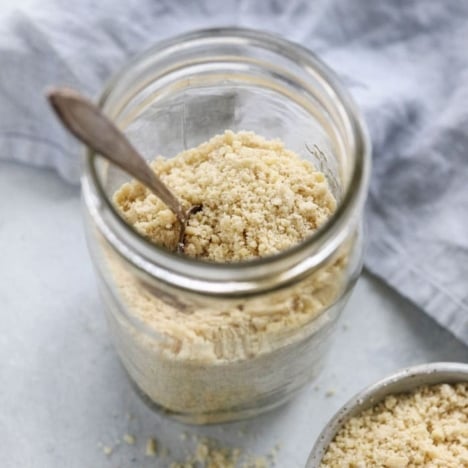
Ingredients
- 8 ounces blanched almonds , whole or slivered
Instructions
- Place the blanched almonds in a high-speed blender or food processor, and process until they are finely ground. If using a high-speed blender, be sure not to over-process as the almonds will eventually start to release their oils and become almond butter.
- For best results, do not blend more than 8 ounces of almonds at a time. (I tried using 16 ounces and couldn't get them evenly ground.) For the most finely-ground results, I've found a blender works best, but the flour I made in the food processor also works for making almond flour recipes-- the final product is just slightly grainier.
- Store leftover almond flour in an airtight container in a dark pantry, or better yet in the fridge or freezer for the longest shelf life. Almond flour can keep well for up to one year if it's not exposed to heat or moisture.
Nutrition
Per 1/4 cup: Calories: 167, Fat: 14g, Carbohydrates: 5g, Fiber: 2g, Protein: 6g
—
I hope this helps you all create even more almond-flour-based goodies in the future!
Reader Feedback: Have you tried making your own flours before? Let me know your favorite way to use almond flour in the comments below!
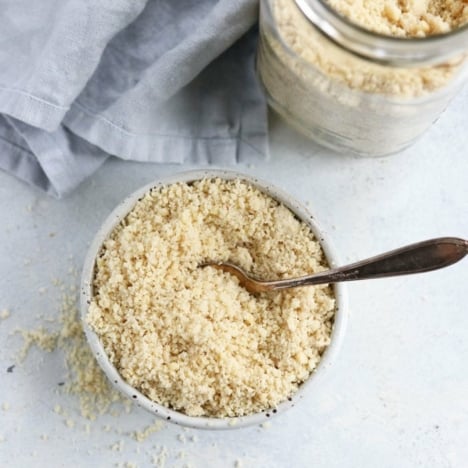
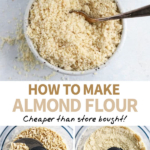
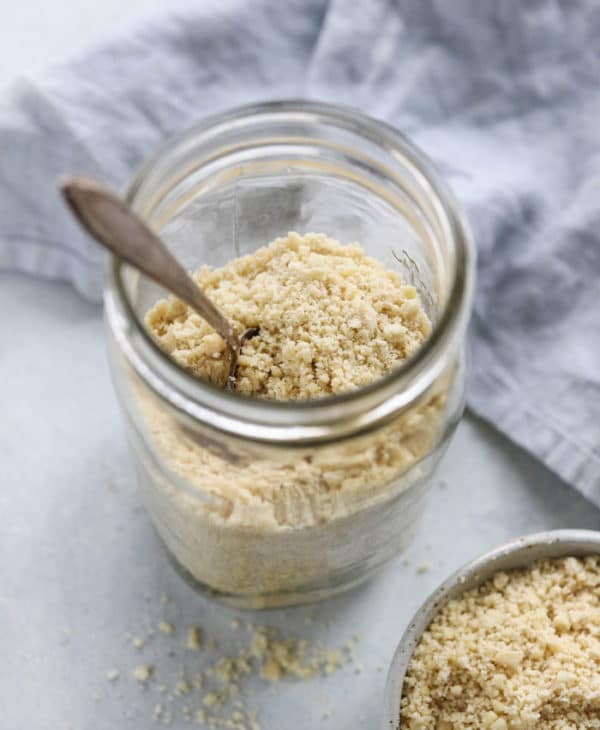
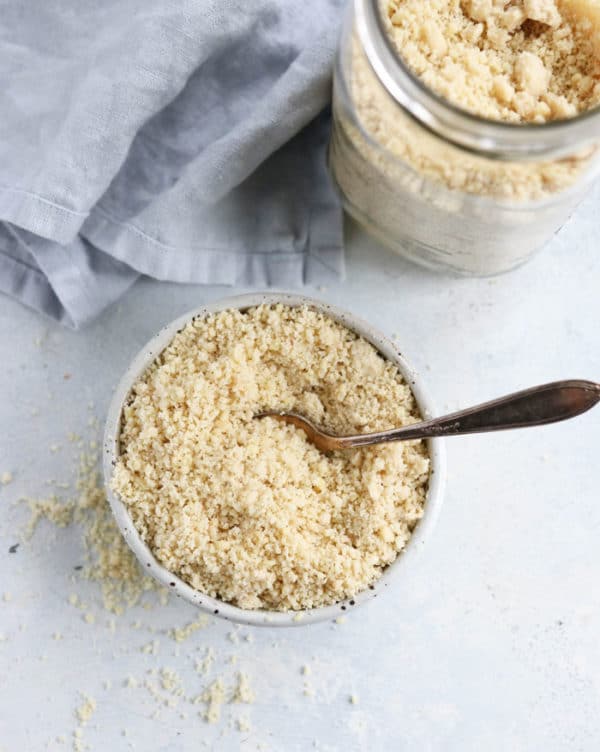


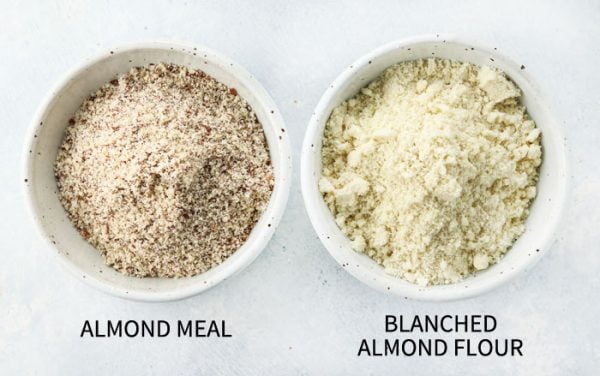
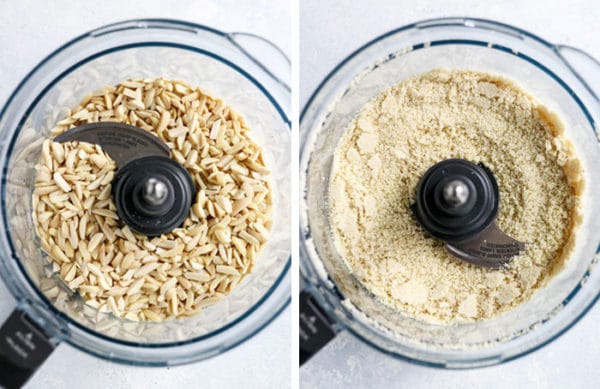

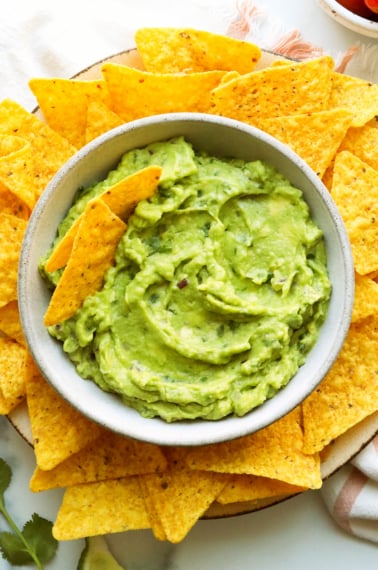
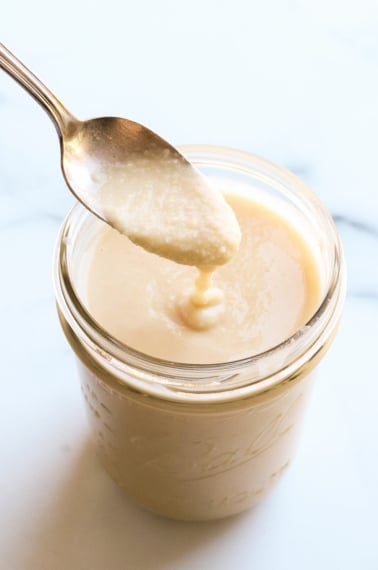
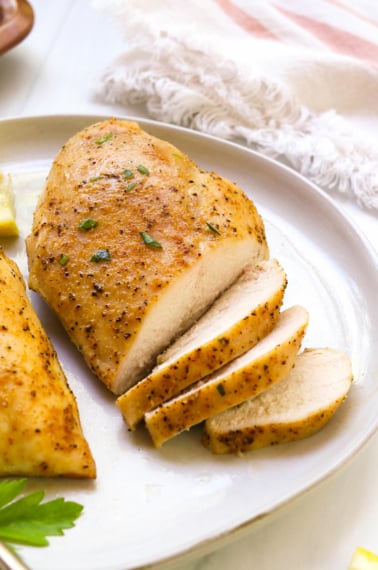







Just wanted to let you know Ange (from Eat spin run repeat) and I are drooling over your blog right now. hehe. Going to try the vitamix juice this weekend! xo
Make sure you strain your juice with something that you don’t mind getting stained! I ruined my first nut milk bag doing that… I’ve heard nylons work well. 😉
Hope you ladies enjoy your weekend!
Megan, I had a few (unused!) packages of Sheer Energy pantyhose. The legs are sturdy and they work great for straining almond milk or coconut milk.
Hi
FYI:
I have used unblanced almond meal in your shortbread cookies and they turned out good.
Oh, good! Thanks for letting us know!
I like to try to get organic when I can. Are almonds one of those foods that doesn’t matter if you don’t buy organic?
I heard somewhere that all almonds in america have to be pasteurized, So I am lazy and get blanched almonds. Something about almond skins though
Hi Louey, almonds are much better for us if they are organic…conventionally grown almonds can be treated with lots of toxic chemicals, besides glyphosate, which is known to cause cancer.
Oh, I have been wanting to get a Vitamix for awhile and my poor Ninja just went out! 🙁 What model did you get? Any advice regarding pros and cons? I love almond flour!! I have made oat flour but that’s about it..have a great day!
A broken blender is the PERFECT excuse to upgrade to the Vitamix, if you ask me. 😉 (that’s when I broke down and bought one myself!)
I have this model and absolutely love it: http://amzn.to/HGGgG8
Not only is it significantly cheaper than the “newest” model, it also seems to be more durable. I’ve seen the newer models break rather quickly, while mine is still running strong! Of course, they’re all covered under a great warranty, but it’s nice that I haven’t had to use it!
Hope you get one soon! It’s totally a life-changer.
I too love my vitamix and will have to try this recipe thank you. Unfortunately I cracked mine yesterday when grinding dried cheese rinds. Thanks for mentioning the warranty. Will look into that. Luckily I bought it at Bed bath and beyond with a 20% off coupon and their exchange policy is awesome. Your recipes are really fantastic. I hope it ok if I share a contest with you that I entered.
http://www.steamykitchen.com/27628-giveaway-vitamix-giveaway-from-whole-foods-market-driscolls.html
When you used your Vitamix did you use the dry blade attachment or the regular blade? We have a Vitamix but don’t have the dry blade.
That Vitamix doesn’t have the variable speeds, which is CRITICAL to getting the most out of your Vitamix! If you are going to spend money to get one, which I recommend, and I absolutely love mine, get one that has the variable speeds so you can make anything and everything! I got a refurbished one, which has a 5 year warranty. Go to Blenderlady.com and check out her info! (This isn’t me, it’s just a great source of info and knowledge about Vitamixes) — I’m not getting anything by recommending the site, just passing along what I have learned. Good luck!
When looking for a new Vitamix, I would DEFINITELY get the model with the container that is shorter and wider. 2 reasons: 1. Much easier to clean and 2. Fits better under upper cabinets. Other than that, LOVE my Vitamix!
I don’t know if I can find gluten-free raw almonds to try this out. We’ve had reactions to dry fruit from Trader Joes (it was processed on same equipment as wheat) so I don’t know if I’d risk trying their nuts and not sure if I could find safe nuts anywhere else that would make this recipe less expensive than buying a bag of nuts 🙁
I wouldn’t risk it either, then! How disappointing that there is cross-contamination. :/
Heather, http://www.nuts.com sells gluten-free raw almonds. I can’t vouch for the safeness of them from a gluten perspective; I bought from them because I need food that’s not corn contaminated and they were mentioned as a possible resource for nuts and dried fruit.
Wonderful post about making your own almond flour. I’ve done it for years and it works like a charm. I am VERY cautious with anything from Trader Joe’s. I mostly buy organic frozen fruit, avocados, or organic eggs there if I can’t get to my usual healthfood store. But that’s about all. They do not sell much legit healthy food – read ingredients before purchasing anything. I find very little at TJ’s that isn’t loaded with wheat/soy/salt/sugar/ingredients I can’t pronounce, or doesn’t have a high probability for cross-contamination. (I have a slight wheat allergy/gluten sensitivity which spawned my transition to Paleo eating. Never been happier/healthier). Just be leery about TJ’s food if you are concerned about something like Celiac. God bless!
hi–i dont have a vitamix. i have a kitchenaid regular sized food processor and a regular blener. how do you make your almond flour? it got too sticky in the food processor…thanks for any help! amy
Great post.
I have one question – Did you use the dry container for the Vitamix or the regular container to make the almond flour?
I just used the regular container! (I haven’t actually bought the dry container, since the regular one seems to handle everything I need.)
I was going to ask that question which did you use the dry blade container as I don’t have that. So good to know!! Why don’t you use whole almonds? Why slivered? I would think whole raw almonds would be cheaper?
I used the slivered almonds because they came blanched– and I was trying to mimic the popular Honeyville brand of blanched almond flour. When I’m only baking for my own family, we do use whole almonds, because we don’t mind seeing brown flecks of almond skin in our baked goods!
I was told to use the dry.
This is such a great idea!! My bag of almond flour expired I just realized, so I will definitely try this out and not buy such an expensive bag!
Keep your almond flour or almond meal in the freezer if you won’t be using it quickly. Best place for it. Lasts a long time. Wonderful to use.
Hello! Wonderful blog- I look forward to reading every day!I was also wondering what juicer you used; my birthday is coming up and I am going to treat myself to a juicer 🙂 but I’d love to have an idea of what to look for. Thanks!!
What a wonderful birthday present!
My favorite juicer is this Breville model: http://amzn.to/IocAfY Unfortunately, that model is REALLY popular right now, and rather hard to find in stores and online.
Another option, which is actually cheaper right now, is the upgraded model: http://amzn.to/HIlQC7
Happy shopping! 🙂
This is awesome! I’ve been wanting to try almond flour but couldn’t justify paying $15 for a tiny tiny bag lol
So glad you posed this, I had a question about almond flour. have you tried using the almond meal from Trader Joe’s in any of your recipes where this almond flour is used? Thoughts?
I haven’t tried using the almond meal, but I have seen some SCD books that called for almond flour OR almond meal– so I assume they can be used interchangeably?
Of course, that’s assuming that you’re not “baking to impress.” I have a feeling the almond meal would create a very grainy texture, which is why most recipes recommend using blanched almonds, so that you don’t have the texture from the skins. Let me know if you end up trying it!
I have used the bag of Trader Joes almond meal ($3.99) in every recipe I have tried here and its all good. I first used a $10.99 bag from my local health food store of a pure white almond flour, with the first receipt I tried…the TJ almond meal must have the skins on or be unbleached as it almost has a “wheat” look to the flour/meal. I have found it to have much better flavor and for the price stock up and keep it in the frig to last longer…so its on hand when I’m in the mood to bake! Thumbs up for the TJ almond meal!
I love TJ almond meal. I use it to bread anything I am going to fry. I haven’t tried baking with it.
I used Trader Joe’s almond meal and I agree…it gives the cookies a great flavor, and I prefer it over almond flour. Plus, it has more fiber, therefore, healthier :). Thanks for the tip!
Thank you!!!! I ust found this post about how you make your alomond flour from blanched slivered almonds. I will ge some tomorrow. This helped so much, and answers my previous post. 🙂
Ahh this is perfect! The main reason I haven’t tried almond flour yet is because it’s expensive, but I could totally make this myself! I wonder if you could do the same with chickpeas and make chickpea flour… although it’s not really that expensive so it’d probably just be easier to buy it. Bookmarking this one for sure. Thanks Megan!
LoL, believe it or not, as cheap as chickpea flour is, i even make my own rice flour too, and NOTHING is cheaper than rice flour. You can also just make coarse rice meal, and use it as a hot breakfast cereal. (I’m celiac, so oatmeal, my love, is off-limits because of the high likelihood of cross-field contamination) and the rice cereal at the store (I think it’s called cream of rice?) is made by Quaker- which means that during manufacturing, it spends a lot of time hanging out in a mill where wheat is also processed! Gah! Luckily, ^apparently we can make our flours ourselves, and still be safe, because whole grains are very hard to contaminate, since they can just be rinsed. 🙂
Don’t give up on oatmeal! Bob’s red mill products has gluten- free organic oats.
One of Trader Joe’s oatmeal that comes in a resealable pouch is specifically gluten-free, safe for celiacs. Also, as mentioned Bob’s Red Mill tries to be also.
Hi Angela.
i hope you are still reading these comments. I left one for you, but I hit the wrong button and put is under #22 as a reply to “Beginner 28” by mistake. Please see it there. It might help you.
Dan
I usually take the leftover almond pulp from making my almond milk (which is done in a blender). Dehydrate the pulp, and then run the dried pulp through my food processor to reduce clumps. Works well for me.
You can use your Vitamix with chickpeas or almonds, but be forewarned the noise is just terrible. I either earplug or step outside for a minute or 2. Really hurts the ears! 🙁
@Angela @ Eat Spin Run Repeat I have been getting ready to do a flour post about all different types of flours that you can make at home, cost differences, health differences, etc. I LOVE Hummus and have tried making my own version of “Chickpea flour” before and loved it for my hummus recipe! I have found in my research and in my own trying things out that you can make your own chickpea flour and it honestly costs about the same amount as buying it. I like to grind my own though. It makes me feel like I am not getting any extra fillers or anything in my flour. I will be posting it in about two weeks under my “Food” tab. You can check it out if you would like to.
Megan! Thank you for this post! It helped me in my research and confirmed a few things I was just pondering but hadn’t actually tried. I LOVE YOUR BLOG just for the record! I hope you don’t mind but in the post I mentioned to Angela about different flours, I hope to link to this post? I hope that’s okay?
Love and Blessings to you both,
Lacy
http://www.chosentheblog.com